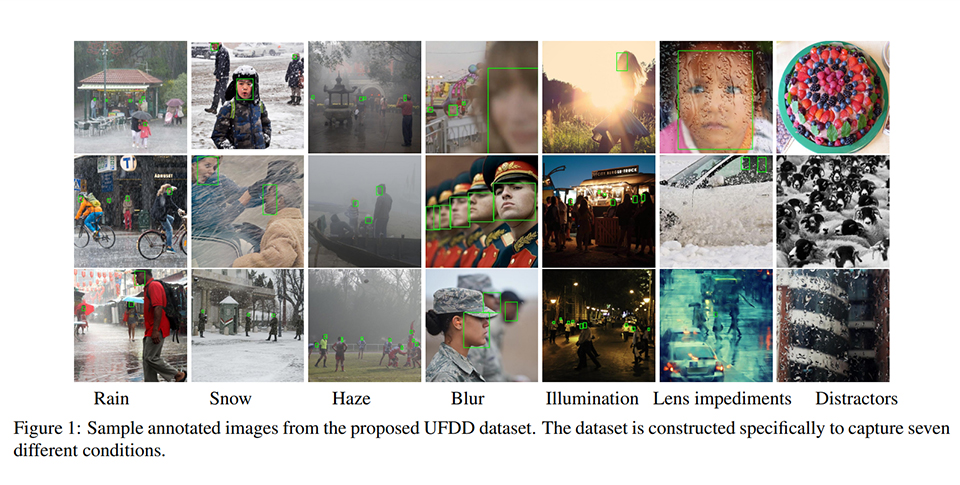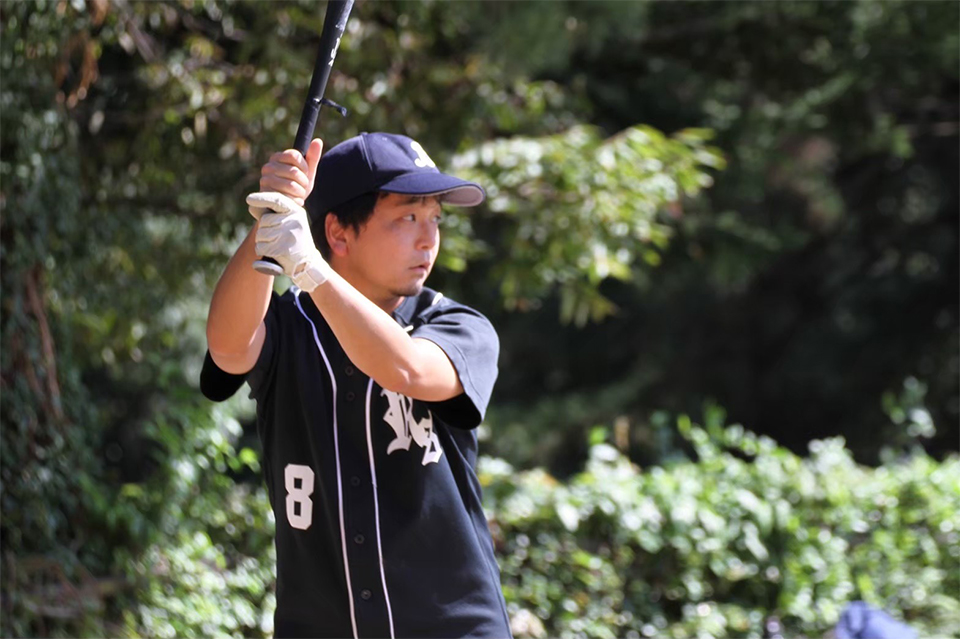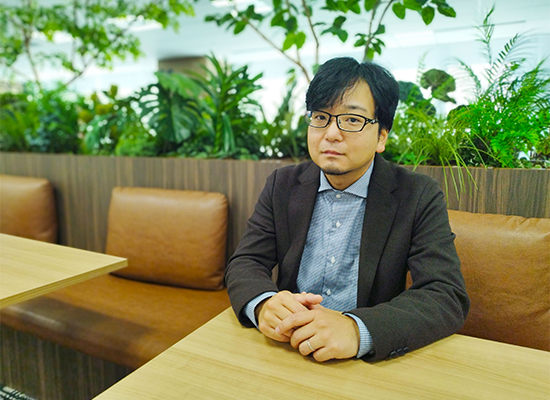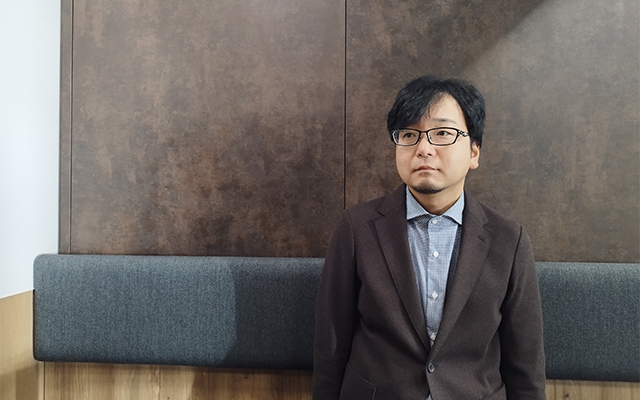I was a child, who loved to collect small toys that are often included as a bonus in snack packaging. Among them, I especially loved robot toys, and before I realized it, I found that my room was filled up with more than 100 robot toys. As I played with the robot toys as if in a puppet show, I became fascinated with robots that could move of their own will. I began to imagine a future where robots, like Doraemon, have their own intentions, engage in conversations and play with humans. This led to my desire to pursue a research path in the field of science, because I thought, "Someday, I would like to engage in advanced work such as creating robots by myself.”
Envisioning a future where robots and humans live together
Tackling the R&D challenges of biometric authentication
My desire to conduct research in a field that is advanced and useful to many people led me to Fujitsu, where I became involved in the R&D of biometric authentication technology (*1). In this role, I worked on examining and improving algorithms for highly accurate and fast individual authentication, using fingerprints, palm veins, and faces.
A large amount of data is required to realize highly accurate biometric authentication technology. As biometric authentication is research involving "people," collecting data for development and verification was particularly difficult. At least several hundred individuals must cooperate in order to conduct reliable verification. We reached out to many individuals both within and outside the company, explained the details of the collaboration, obtained their consent by having them sign agreements, and iteratively went through the process of acquiring data using cameras and sensors. Through these efforts, we were able to secure the cooperation of over 1000 individuals, surpassing the initial goal.
Another point that we worked diligently on in R&D was to improve processing speed while maintaining high accuracy. In biometric authentication technology, which requires real-time processing, even a one-second delay can seem like a long time to the user. We went through numerous iterations to optimize biometric processing and achieved highly accurate and fast authentication performance. I am very happy that the biometric authentication technology I worked so hard to develop has been commercialized and is used by our customers every day.
Beyond biometric authentication, a dream of creating robots
You may think that I am now on a very different path compared to my childhood dream of building robots, but in fact, my dream has not changed. My dream is simply an extension of this research theme. Creating a robot capable of thinking and behaving like a human is not something I can achieve on my own. In the same way that functions like photo shooting, human interaction, and internet connectivity are consolidated into a single smartphone device, I believe it's likely that future robots will be created by combining various advanced technologies. For example, it is not limited to AI technology for robot intelligence. You need computing technology for robots to operate at high speed and with high precision. Network technology is also essential for connecting to the outside world to gather information, and data & security technology is required to protect the robots themselves from danger, and to ensure that they can operate in the same manner as humans, handling data and taking privacy into consideration. Moreover, it's essential to emphasize that the interaction won't be limited to just robots; human involvement will be necessary, and converging technologies is expected to play a key role.
These are the key technologies (*2) that Fujitsu Research is focusing on. I believe that by consolidating the future outcomes of all Fujitsu Research members, we may come closer to realizing the vision of robots. I cannot predict whether Fujitsu will conduct research on robots in the future, but this concept really motivates me, and I strongly believe that Fujitsu researchers are working together as one. This belief helps me to move forward to pursue my dream. Obviously, I am also involved as a member in the R&D of biometric authentication. After all, when robots become a reality, biometric authentication will likely be essential for them to recognize the individuals in their presence.
Studying abroad for biometrics and AI research
In 2016, I participated in a conference on biometric authentication. I was impressed by the lecture on deep learning given by Dr. Vishal M. Patel, whom I met there, and thought, “I want to do research on applying machine learning to biometric authentication under him!” I took the initiative with determination, and embarked on a one-year study abroad program in his research lab. Despite Dr. Vishal M. Patel’s young age, he has a lot of knowledge and is very enthusiastic about teaching. Professor came to the university research laboratory every day without fail, even when he did not have classes, to listen to our research progress and to support us to the best of his ability to produce results. I repeated simulation experiments while reading the latest AI and biometric papers from morning to night. In the evenings, as refreshment, I had dinner with professor and other research colleagues, as well as taking time out to enjoy sports such as frisbee, squash, volleyball, and golf. After that, I returned to the laboratory, checked the simulation results, corrected any problems, and repeated the experiments again.......and it was a fulfilling cycle.
During my study abroad, I worked on research on face detection technology as one theme of biometric identification technology. In street cameras, a real problem is that the rate of correct face detection and identification declines under unfavorable conditions such as rain or snow. Another issue is that non-facial objects can be recognized as faces. We examined the key factors that influence such accuracy, and even with the use of state-of-the-art deep learning-based face detection algorithms at the time, we found that detection rates decrease under adverse conditions. In a paper (*3), we summarized that there are challenges to be addressed for practical implementation, aiming to improve the viability of the technology. This paper was the result of my year-long intensive research period with the professor there, and it has been cited by more researchers than the paper I published in Japan. It is very satisfying to realize that my research has been useful to so many people in the field of biometrics research.

Towards R&D for user safety
Currently, I am involved in the R&D of a biometric authentication theme of continuous authentication technology (*4), where authentication is ongoing without the need for conscious awareness or specific authentication actions. I believe that constantly knowing the identity of the person in front of you can lead to various value creations such as discovering lost individuals, tracking suspicious individuals, and enhancing personalized services. On the other hand, in some use cases, we have learned that some people may feel resistant to using the technology. We are also addressing R&D focused on privacy considerations, aiming to ensure that everyone can use the technology with real peace of mind.

Friends, buddies, secretaries, caretakers...
I see robots as beings that interact with people in various ways, and I believe that robots will become a familiar part of our daily lives in the future. In a society where numerous robots are present in urban areas, I anticipate that some individuals may feel uncomfortable or uneasy about their privacy being observed by robots. I think addressing these concerns through technology is likely to be a natural extension of our current research. I would be delighted to contribute to the advancement of technology, ultimately creating robots that can be used with a true sense of security and safety.

Data & Security Research Laboratory
Graduate School of Human and Environmental Studies
Joined Fujitsu in 2009
Work steadily towards creating advanced and interesting technologies, leading to an exciting future for all mankind
Editor's note
In the interview, Hajime shared insights about his university days. He said that coming up with brilliant ideas and achieving success, like top-tier researchers, was not something that happened easily; rather, he faced many failures and setbacks. Hajime said with conviction, “However, I believe my strength lies in using such setbacks as fuel, steadily studying and growing. Not giving up after failures and persistently tackling challenges is possible, because I have a dream of creating robots.” Hajime likened his personal growth to the learning process of an AI model. He pointed out that, just as an AI model in the early stages may have low accuracy, it is normal to encounter the unknown when embarking on new research. He emphasized that the process of adjusting parameters and reconsidering algorithms repeatedly is essential until a high-accuracy AI model is achieved. He also explained to me that in both life and a career alike, it is crucial to tackle challenges one by one, solving them along the way. So, what kind of dreams are you all aiming for?
-
(*1)
-
(*2)
-
(*3)
-
(*4)





